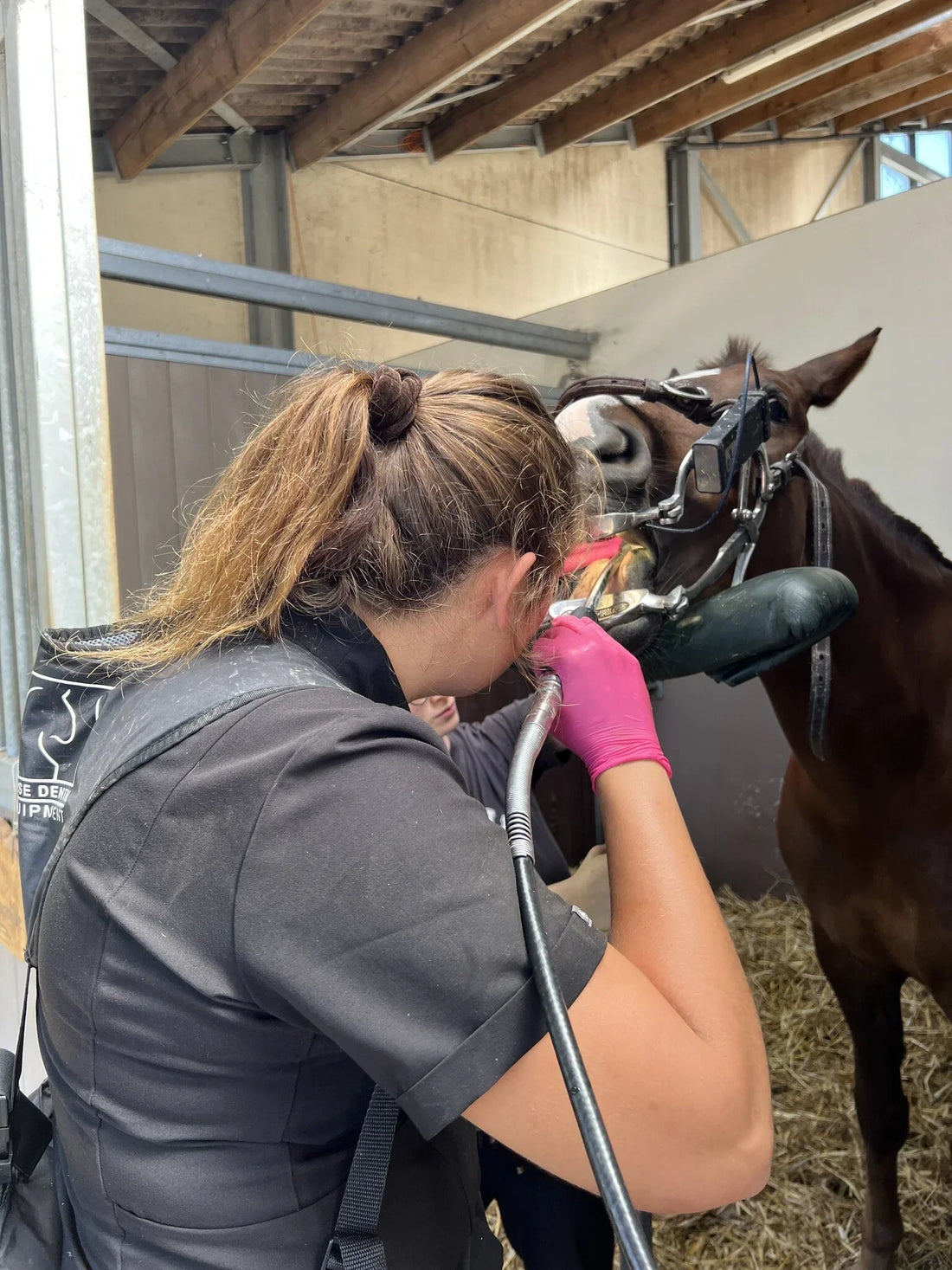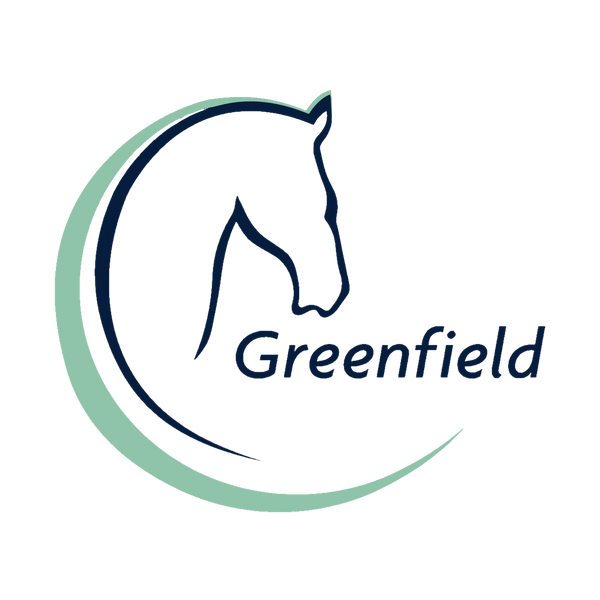
Day of the (horse) dentist!
Today, on March 6th, we celebrate Dentist's Day. On this occasion, we must not forget to put our equine dentists in the spotlight. We had a conversation with Dorien Huyvaert, an equine veterinarian and equine dentist, who answered some frequently asked questions about the teeth of our loyal four-legged friends and how they are treated.
From what age should a horse's teeth be checked?
Young horses are in the process of shedding their milk teeth and gradually getting their permanent teeth. The milk caps (shedding milk molars) can cause discomfort during this period. Some horses also develop wolf teeth, which are small, rudimentary teeth with no function. These wolf teeth are located just in front of the first molars and can cause problems and discomfort when riding with a bit. They are usually found in the upper jaw and sometimes in the lower jaw.
Some horses also have "blind" wolf teeth, which remain under the gumline. However, when using a bit, the gum is pushed against the tip of the wolf tooth, which can cause pain. That’s why it is important to have a young horse’s teeth checked before starting saddle training, ideally around 2.5 to 3 years of age. This allows wolf teeth to be diagnosed in time and prevents a painful first experience with the bit.



How often should a horse's teeth ideally be checked?
An annual dental check-up is not a luxury. Horses are masters at hiding dental problems.
How does an equine dentist work?
The process begins with administering a mild sedation (via injection) to the horse. This ensures both safety and allows for a thorough dental inspection and treatment. First, the horse’s closed mouth is examined to check the incisors at the front. Then, a mouth speculum is placed to keep the horse’s mouth open, and the mouth is rinsed with water to remove any food residues.
I personally work with a head support on which the horse can rest. This keeps the horse at eye level, allowing for a clear inspection of all teeth and the entire mouth while filing is performed.
Why is an equine dentist necessary?
A horse's teeth continue to grow throughout their life, and chewing naturally wears them down. However, the chewing surface is not perfectly horizontal—it slopes outward. This can cause sharp edges (enamel points) on the molars, which need to be filed down; otherwise, they can cause injuries in the mouth.
Just like humans, horses don't always have perfectly aligned teeth, which can lead to long-term problems. It is the equine dentist’s job to check and monitor these issues to ensure the horse’s dental health.

How can I tell if my horse has dental pain?
Horses with dental pain often change their chewing behavior, which can cause them to form quids (partially chewed wads of food) or leave their food partially or completely uneaten.
A horse that forms quids should always be examined by a dentist, as this is a clear sign of discomfort or dental issues.
